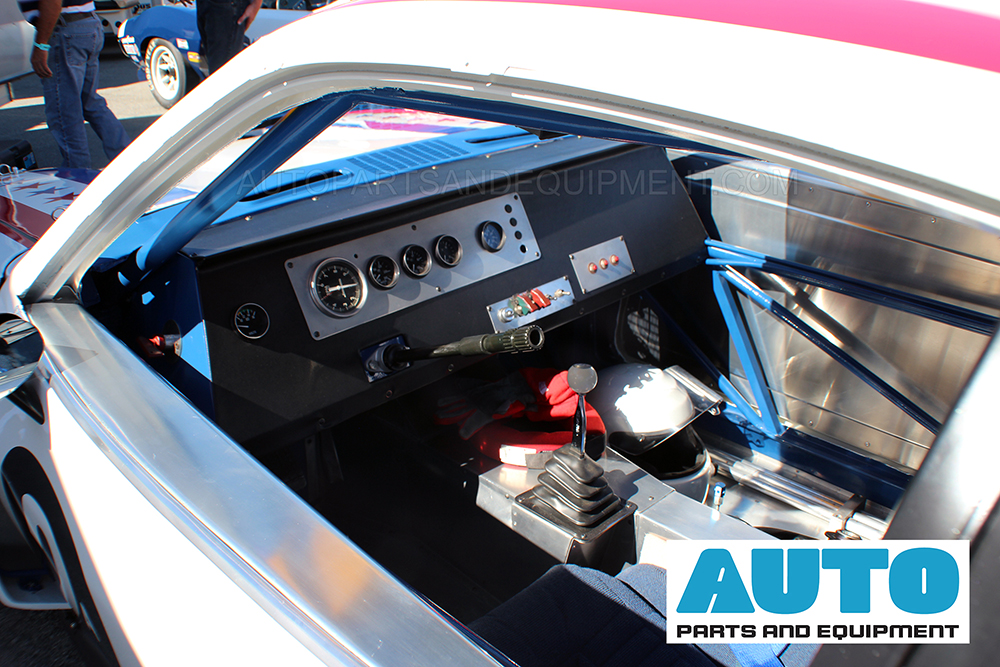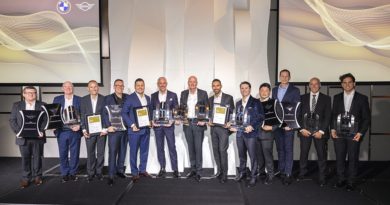Mostert accepts offer to drive Moffat’s Monza
Bathurst 1000 winning driver, Chaz Mostert, has accepted an offer to drive the ex-Allan Moffat Chevrolet Monza sports sedan of Walkinshaw Andretti United Supercars team co-owner, Zac Brown. Mostert also wants Moffat’s son, James, to drive the car.
The offer, made on Twitter, is in response to Mostert’s comment that he should drive a car from Brown’s collection after McLaren Formula 1 driver, Daniel Ricciardo, was rewarded with a drive in Brown’s ex-Dale Earnhardt Chevrolet Monte Carlo NASCAR for winning this year’s Italian Grand Prix.
Unlike the Ricciardo drive, there was no agreement with Mostert, however the idea was raised during the Bathurst 1000 post-race media conference.
“We never really settled on anything, but I reckon he owes me now for sure,” Mostert said. “I’d better have a look through his garage and work out what I want to drive.”
James Moffat, who finished second at Bathurst driving with Cam Waters, suggested the Monza.
“That sounds pretty cool, that’d be a good story,” Mostert said. “Do you want to come along too, Moff?”
Moffat replied: “Yeah, I’ll wipe the windscreen for you.”
Moster later tweeted: “Sounds like a plan @ZBrownCEO but I want to sweeten the deal. I also want my great friend @J_Moffat to have a steer cause I reckon driving an amazing piece of history that your dad had made would be a unreal moment.”
Brown purchased the car earlier this year.
In anticipation of the drive, we visit the archives to look at how the Moffat Monza was restored to race-ready condition.
FROM THE ARCHIVES – FIRST PUBLISHED IN 2015
Strolling through the Laguna Seca pits at the 2015 Monterey Historic races, our US correspondent Brian Zana discovered a US-made car with a rich Australian history
WORDS & PHOTOS: Brian Zana
In auto racing, few events can match the annual Rolex Monterey Historic Races at Mazda Speedway, Laguna Seca. This event attracts some of the most famous and well-documented vintage race cars from around the world and this year I was fortunate enough to attend the weeks’ events.
As I walked through the paddock area admiring the amazing diversity of cars, such as the 1980 Ferrari 512BBLM, the 1955 Jaguar D-type and the 1977 Elfin MR8 Formula 5000, I noticed an unusual car.
As I got closer, I realised it was a 1974 Chevrolet Monza. I knew I had to speak to the owner and find out the story on this vintage Chevy race car.
I knocked on the trailer door and out came Stephen Sorenson, the car’s owner. We had a brief discussion about the car as he was heading out for his group’s practice run of the morning. We agreed to meet up later in the day to sit down and discuss his car, and its history in length.
Chevrolet was trying to compete with the smaller import cars of the early ‘70s and they developed the Monza to do so. As with many car companies, they felt that if the cars won on Sunday, they would sell on Monday.
As the day wore on, I contacted Sorenson numerous times, but he was always a bit too busy to sit down with me. This was due to having some shift linkage issues with his newly restored Monza. You see, the car had only been completed mechanically in May and then torn apart to be media blasted and painted in the original DeKon paint scheme for this event in August. The next morning, I caught up with Sorenson, and after a bit of a search, we found a relatively quiet place to have our talk.
Sorenson is a wealth of information when it comes to Chevy Monzas in general, not to mention his specific Monza. He began by telling me how these small vehicles became race cars.
Engineer Lee Dykstra and driver Horst Kwech left Ford racing and developed a race team called DeKon, which was a mix of their two names, but also stood for design and construction. The first car that DeKon raced was a Ford Falcon, with all the racing bits you would expect from a factory team.
After just a short time, Ford pulled the project and funding from the DeKon racing team. Chevrolet saw this as a chance to help the sales of their Monza.
At that time, Chevrolet was trying to compete with the smaller import cars of the early ’70s and they developed the Monza to do so. As with many car companies, they felt that if the cars won on Sunday, they would sell on Monday.
Chevy decided to build 13 of these race Monzas and DeKon was a large part of their development. The cars didn’t use stock frames as many of their competitors did, these Monzas used the first computer-designed frames produced by Chevrolet. This made the cars lighter without sacrificing strength.
Some of the other custom parts made for the cars included the front and rear hubs, which sported a four-bolt pattern instead of the more common five-bolt pattern, the upper and lower ‘A’ arms, and the watts link.
These cars didn’t use the stock frames as many of their competitors did, these Monzas used the first computer-designed frames ever produced by Chevrolet.
Once the cars were finished, DeKon took the serial #1005 Monza to the track. Their last race with the car was in December of 1975 at the Daytona Speedway. For this race they hired Australian champion driver, Allan Moffat. During this race Moffat hit speeds of 205mph (330 km/h) on the banking of the Daytona Speedway.
After the race, Moffat bought the car from DeKon and immediately shipped it to New Zealand for a race the following week. It cost Moffat US$10,000 to ship the car for this race, which was quite a sum of money in 1975.
Moffat raced the car for the remainder of 1975 and in 1976 he shipped the car to Australia, where he ran it in the inaugural Australian Sports Sedan Championship, winning the title (he also drove a Ford ‘Cologne’ Capri RS3100 in the championship).
This made it the only one of the 13 Monzas to win a championship. Moffat raced the car in many different paint schemes into the 1980s and then retired the car.
It was taken apart in 1984 to be restored but instead was sold to Toby Bean in the United States. Bean never got a chance to restore it and sold it to the founder of Historic Sportscar Racing, Steve Simpson. The new owner was apparently so busy with HSR that he didn’t restore the Chevy either, selling it to the current owner, Stephen Sorenson in 2005.
Sorenson told me that when he received the car it was nothing but a tube frame and many boxes of parts.
“It wouldn’t have been such a hardship to restore the car but there were parts in the boxes that didn’t belong to the Monza,” he said.
Sorenson didn’t get around to restoring the car until this past year. I asked him what the hardest part of the restoration was and he replied, “Fabricating the interior and exterior panels”. He and his team at Centripetal Motorsports used old photos to correctly recreate these panels from scratch.
After getting the Monza back together, Sorenson and his team took it to Mazda Speedway in May of this year to test. The car completed its first laps on a track in more than 31 years with flying colours.
It wouldn’t have been such a hardship to restore the car but there were parts in the boxes that didn’t belong to the Monza.”
The Monza returned to Laguna Seca for another set of test runs in June. After the testing was complete, Sorenson took the car back to his shop and tore it apart so they could media blast everything and repaint it back to its original paint scheme for the upcoming Rolex Monterey Historic races.
During the week, Sorenson continued to have issues with the previously mentioned shift linkage, but this didn’t dampen his excitement for driving the car. He, like most vintage race drivers, just loves to get the car on the track and have others enjoy seeing them as they were once raced.
In speaking with Sorenson about his plans for the car, he told me he intends on replacing the carburettor with a mechanical fuel injection system, as that was how it was race in the ’70s. He added the original fuel injection was lost in a fire during a race in 1977 when Moffat was racing the car.
I asked him if he had thought about taking the Monza to Australia to race it and he said he wants to attend the vintage auto race meeting at Phillip Island in the near future, knowing the car will be more recognised in Australia.












